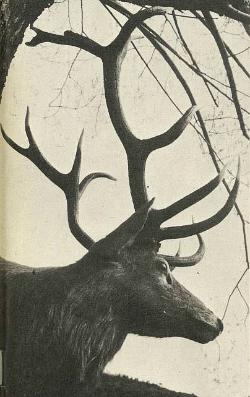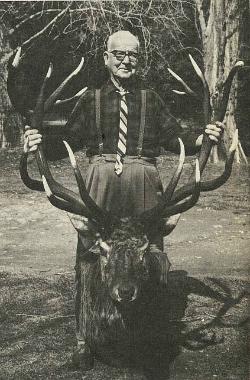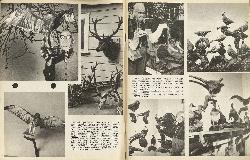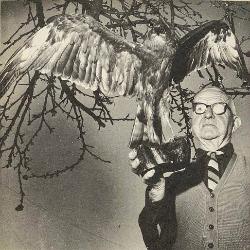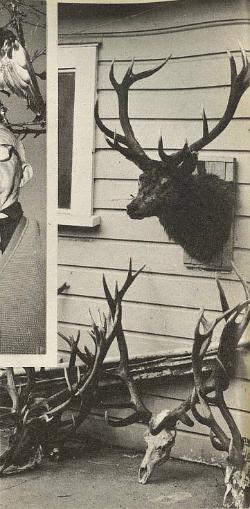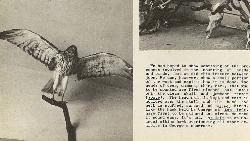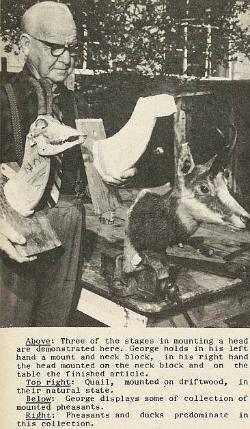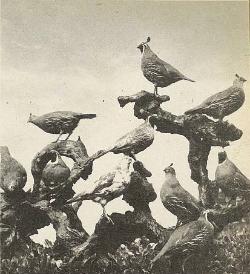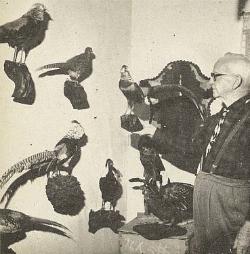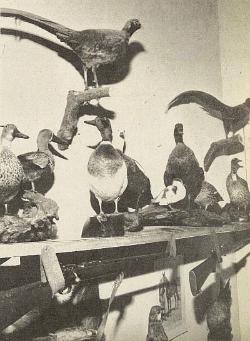3
Heads – He Has Them
How did we get so close to photograph this magnificent 14-pointer stag? The answer is the photograph at right of Nelson's taxidermist, George Elliott, of Nile Street, with one of the countless heads that he has mounted in his 67 years in the trade. George, now a sprightly 82, learned taxidermy from Mr W. Martin many years ago, and in the intervening years he has mounted more game than he can remember. Much of it still occupies places of honour in homes all over the world. To his knowledge, George is one of only two professional taxidermists (not attached to museums or similar institutions) still operating in New Zealand. Each year, as the roar or shooting season ends, he is kept busy mounting game which comes to him from all parts of the country.
4
We had hoped to show something of the processes involved in the mounting of heads and birds, but we did this feature between jobs. We can, however, show a small portion of the work and explain how it is done. The heads of deer, chamois, thar, etc., that come to be mounted are first cleaned out until only the clean skull and jawbone remain (above). The head skin is kept and this is moulded over the skull and the head and neck is stuffed, screwed and wired. Birds, like the hawk held by George at top left, have first to be skinned and wired. We make it sound easy. It's not. At left is an unusual albino hawk overlooking all other exhibits in George's showroom.
5
Three of the stages in mounting a head are demonstrated here. George holds in his left hand a mount and neck block, in his right hand the head mounted on the neck block and on the table the finished article.
Quail, mounted on driftwood, in their natural state.
George displays some of collection of mounted pheasants.
Pheasants and ducks predominate in this collection.



